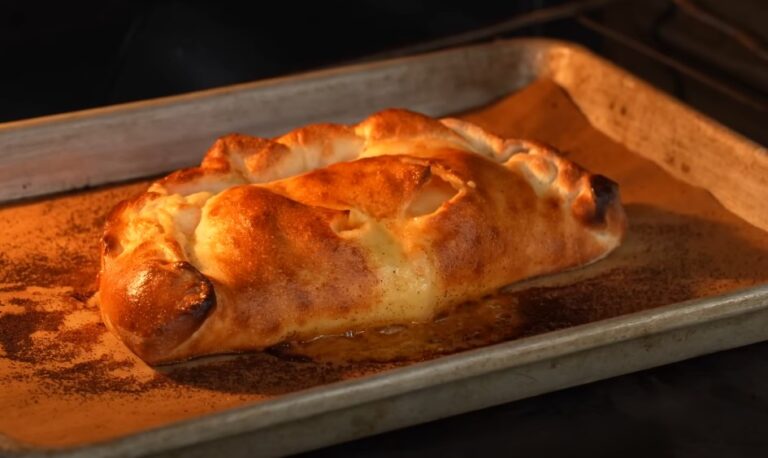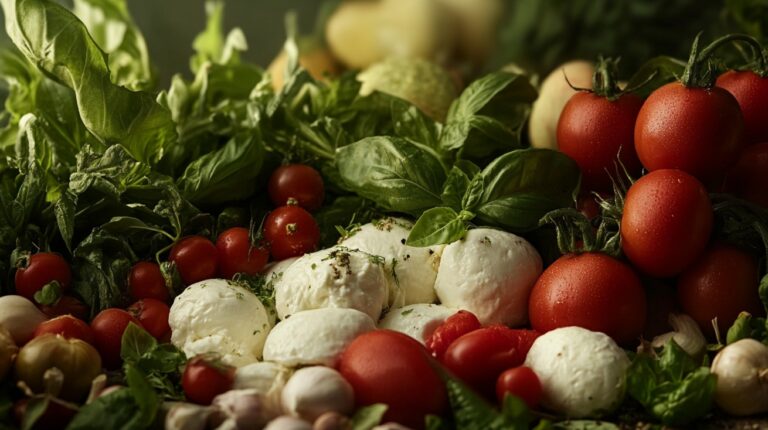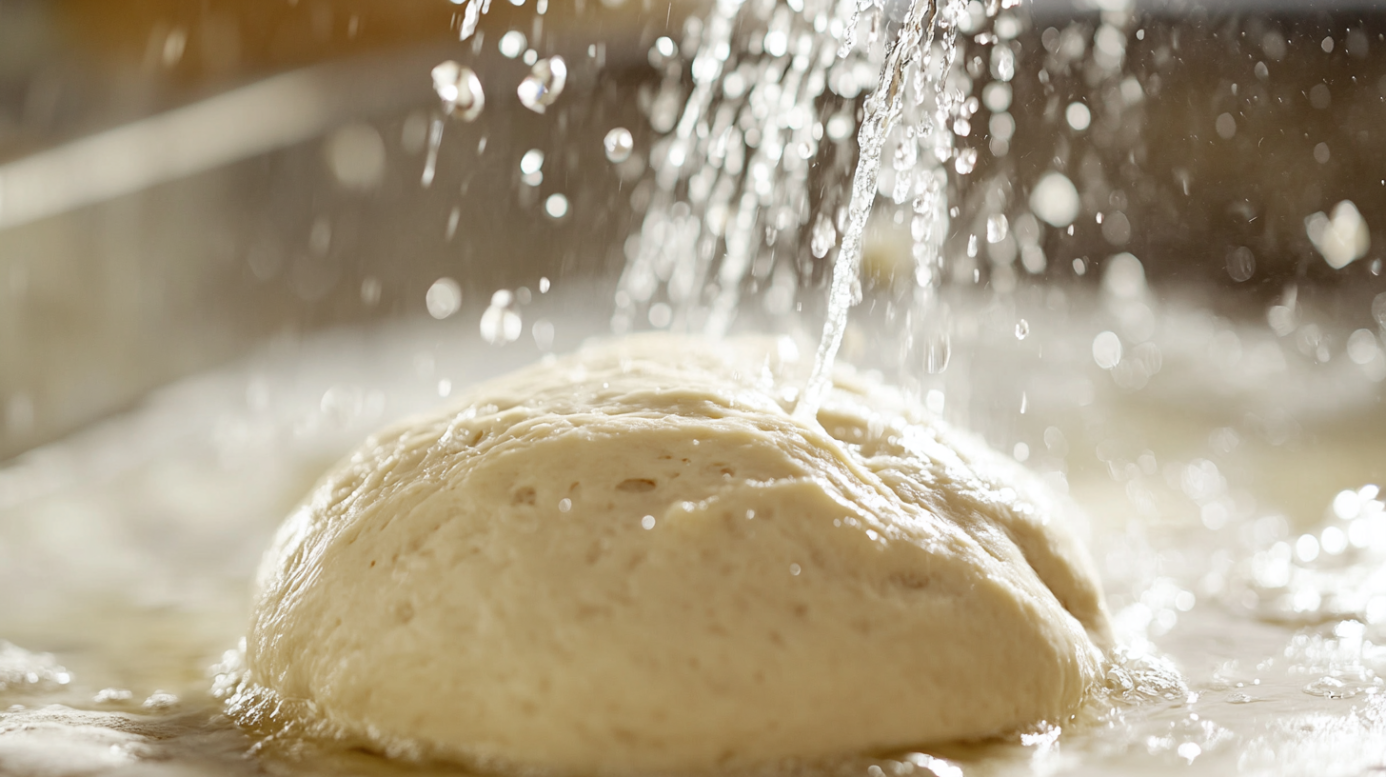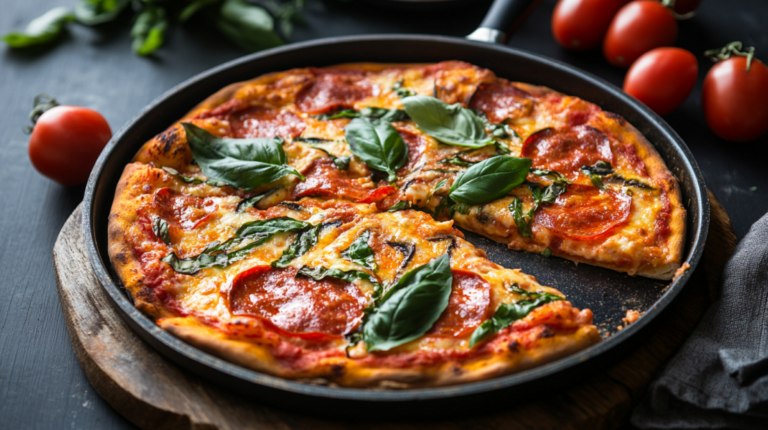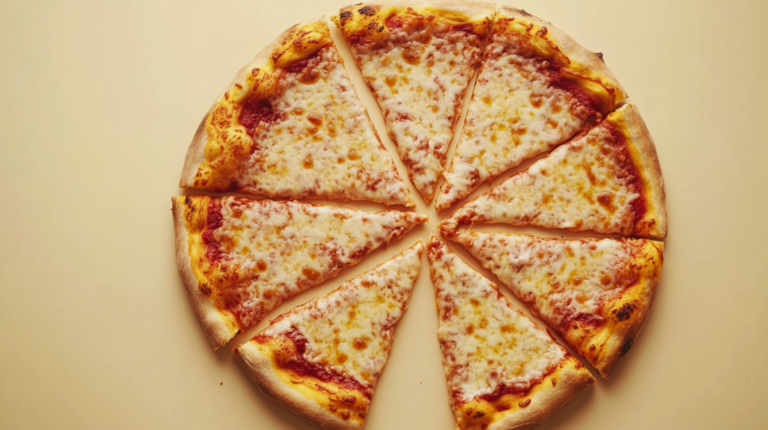Ask any seasoned pizzaiolo (pizza maker) about the secret to great pizza dough, and you’ll hear about flour types, fermentation time, and maybe even the oven temperature.
But one key ingredient that often gets overlooked is water.
And yet, water can be the silent difference between a dough that’s elastic and flavorful, or one that’s flat, tough, and hard to work with.
In short: Yes—water quality matters more than you might think when making pizza dough.
It affects everything from how the yeast behaves to how the dough feels and tastes. Let’s dig into why.
Table of Contents
ToggleThe Foundation of Dough
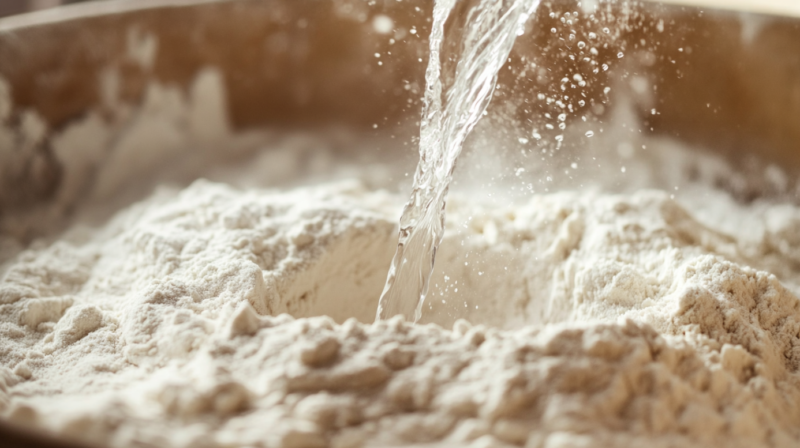
Water is often seen as the “silent” ingredient in pizza dough—tasteless, colorless, and usually taken for granted.
But in reality, it’s absolutely foundational to making dough that performs well and tastes great.
Let’s break down its essential roles in pizza dough:
1. Hydration of the Flour
Water hydrates the flour, which starts the formation of gluten—a network of proteins (mainly glutenin and gliadin) that gives dough its structure and elasticity.
Without adequate hydration, gluten strands can’t form properly, and the dough will be crumbly or dry.
Over-hydration, on the other hand, can result in a sticky, hard-to-handle mess. The right balance makes the dough stretchable, airy, and strong.
2. Activation of Yeast
Yeast is a living organism, and it needs water to activate. When hydrated, yeast begins to feed on natural sugars present in the flour, producing carbon dioxide and alcohol through fermentation. This is what causes the dough to rise and develop flavor.
If the water is too cold, fermentation slows down; if it’s too hot, it could kill the yeast altogether.
3. Temperature Regulation
Water plays a key role in controlling the dough’s internal temperature, which directly affects the speed of fermentation.
A cooler dough ferments slowly, allowing deeper flavor development, while warmer doughs ferment faster but can be harder to control.
Many experienced bakers will even adjust their water temperature depending on room conditions to hit the ideal dough temperature (usually around 75–78°F / 24–26°C).
Function
Role
Why It Matters
Hydrating Flour
Absorbs into flour, forming gluten strands
Provides dough elasticity, strength, and proper texture
Activating Yeast
Dissolves and awakens yeast, enabling fermentation
Creates rise, gas bubbles, and flavor through CO₂ and alcohol production
Controlling Temperature
Regulates the overall dough temperature
Affects fermentation speed and dough handling
Dissolving Ingredients
Helps evenly distribute salt, sugar, or oils if used
Ensures consistent flavor and dough development
Determining Dough Consistency
Varies depending on hydration level (e.g., 60% vs 70% hydration)
Impacts whether the dough is soft, airy, chewy, or crisp
In short, when water is overlooked, everything else—from yeast to gluten to fermentation—can suffer. Whether you’re kneading by hand or using a mixer, choosing the right water and managing how it’s used is crucial to getting the dough to behave the way you want.
Water Composition: More Than Just H₂O
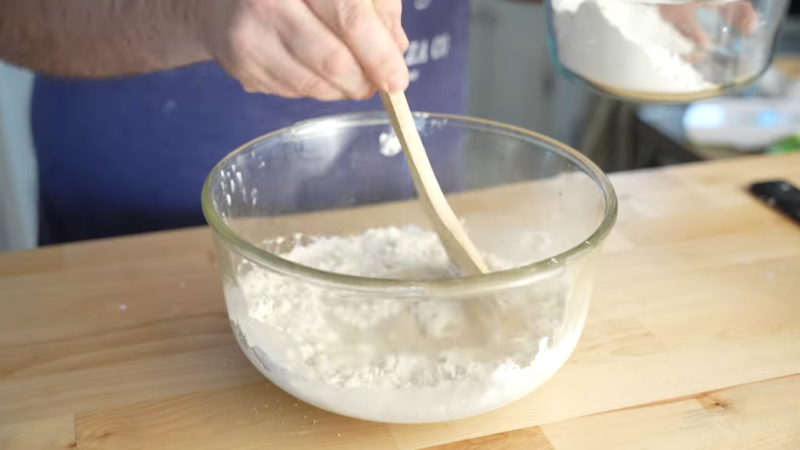
Not all water is created equal. Depending on where you live, the water coming out of your tap can have varying levels of minerals, pH, and chlorine. These variables can have a real effect on your dough:
1. Hard vs. Soft Water
- Hard water contains higher levels of calcium and magnesium.
- Soft water has fewer minerals and may contain added sodium.
These minerals directly impact gluten development. Hard water strengthens gluten, making the dough firmer and potentially harder to stretch. Soft water, on the other hand, might make the dough too slack and difficult to shape.
A study from the American Chemical Society published in 2017 examined the effects of water hardness on baking, showing that different mineral levels in water altered both yeast activity and gluten strength—two crucial elements in pizza dough.
2. Chlorine and Chloramine
Many municipalities treat tap water with chlorine or chloramine to kill bacteria. That’s great for safety, but not so great for fermentation.
These chemicals can:
- Inhibit yeast activity.
- Alter the dough’s natural fermentation flavor.
- Potentially affect the lifespan of your sourdough starter if you’re using one.
According to research from the Institute of Food Technologists, chlorine can reduce microbial activity in dough fermentation, meaning your yeast won’t perform as well, leading to poor rise and bland flavor.
Real World Examples: New York vs. Naples
You’ve probably heard the myth that New York pizza is amazing because of the water. And while that’s been exaggerated for marketing, there’s some truth to it.
New York City’s water is moderately soft, with a low mineral content and a near-neutral pH.
That’s a sweet spot for dough-making. It supports proper gluten development without making the dough too stiff, and it’s gentle enough to not mess with yeast.
Compare that to other cities with very hard water (like parts of Los Angeles or Phoenix), and you’ll often see bakers using filtered or bottled water to maintain dough consistency.
@ryanmichaelcarter Neapolitan Pizza Dough Recipe. This is a simple pizza dough recipe that I use for all of my thin-crust pizzas. There’s only 3 ingredients, plus water. I’m not gonna lie to you, pizza takes practice to get right. You’ll need a gram scale for this so you can accurately measure. INGREDIENTS + 1000g of ’00 flour (fine-ground flour or substitute with bread flour) + 650g warm water (about 120F) + 1g Instant dry yeast + 28g sea salt, fine DIRECTIONS + STEP 1: HYDRATE Add water to a large mixing bowl. The water will cool a bit and should be somewhere around 110F. Sprinkle the yeast on top of the water and let sit for 2-3 minutes. + STEP 2: BUFFER Mix a handful of flour with the water in the mixing bowl. In the flour bowl, mix in the salt. + STEP 3: MIX Add the remaining flour and salt mixture to the mixing bowl and combine. Once most of the flour is incorporated, transfer the dough to your work surface. + STEP 4: KNEAD Knead the dough for about 10-15 minutes. This process strengthens the dough and will help get us a light, airy crust. + STEP 5: FIRST RISE Transfer the dough ball to an oiled bowl and cover with plastic wrap. Let sit at room temperature for 2 hours. Ideally, make this in advance so it can sit in the fridge overnight after the first rise. This will help develop a better dough flavor. + STEP 6: DOUGH BALLS After the first rise, punch down the dough to remove excess air. Then, separate it into 6, 270g-ish dough balls. Place the dough balls on a large tray or baking dish with an inch or two of space in between to give them room to rise. Cover the dough balls and let them sit at room temperature for 6 hours. If making this dough in advance, place the dough balls in the refrigerator overnight after the second rise. The dough will need to sit at room temperature for about 2-3 hours before stretching. #pizzadough #neapolitanpizza #casitamaderecipes ♬ original sound – Ryan Michael Carter
Even in Naples, Italy—the birthplace of Neapolitan pizza—pizzerias use naturally filtered water from surrounding mountains, which is known to have low chlorine and balanced mineral content. This gives the dough that silky stretch and perfect chew.
So, What Can You Do?
Here’s how you can improve or control water quality in your own pizza-making:
- Test your tap water. Use a water hardness test strip (cheap and available online).
- Use filtered water. A simple charcoal filter can remove chlorine and reduce mineral content.
- Let water sit. If you suspect chlorine, let your water sit out for 24 hours so the chlorine evaporates.
- Use bottled spring water. Many pros use spring water for consistent mineral content (not distilled!).
Final Thoughts
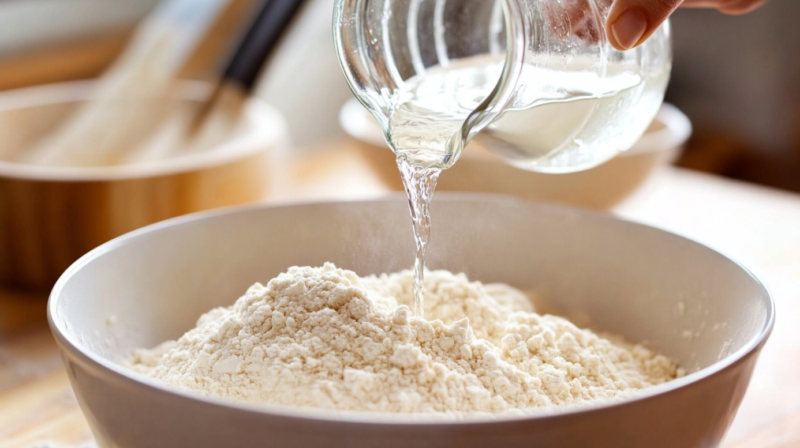
Pizza dough is simple—just flour, water, yeast, and salt—but each of those ingredients plays a big role.
Next time your dough feels “off” or doesn’t rise the way you expect, it might not be your technique. It might just be your water.
By paying attention to water quality, you’re not chasing a myth—you’re dialing in a real, science-backed element of what makes great pizza dough truly great.
Related Posts:
- 6 Tips for Making Crispy Thin-Crust Pizza -…
- Flour Matters - Which Type of Flour Creates the Best…
- Why You Should Brush Your Pizza Crust with Oil (and…
- Beer Pizza Dough Recipe (No Yeast Pizza Crust)
- 1-Hour Pizza Dough Recipe: Quick and Easy Homemade Crust
- New York Style Pizza Dough Recipe: Master the Perfect Crust



